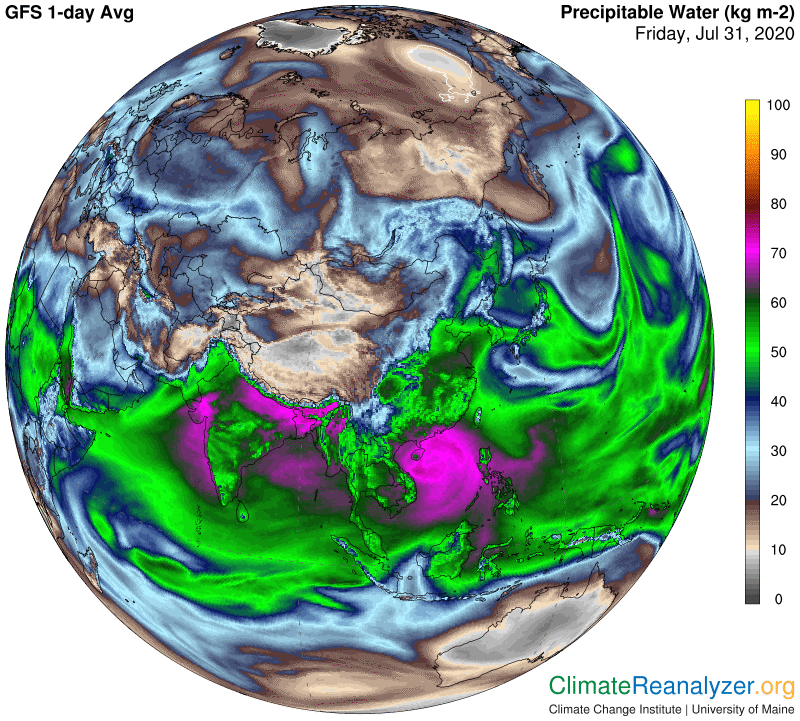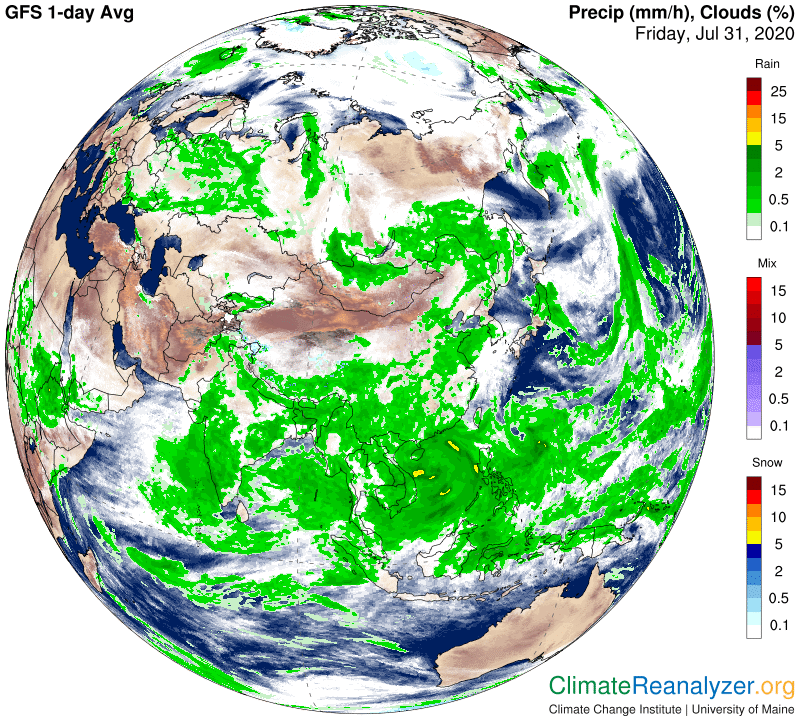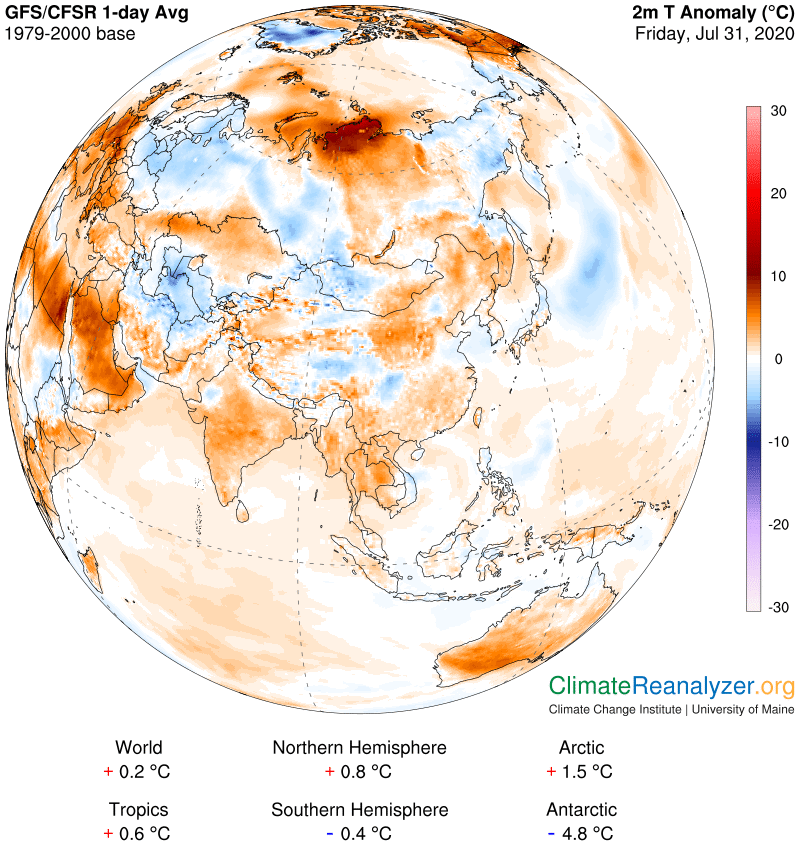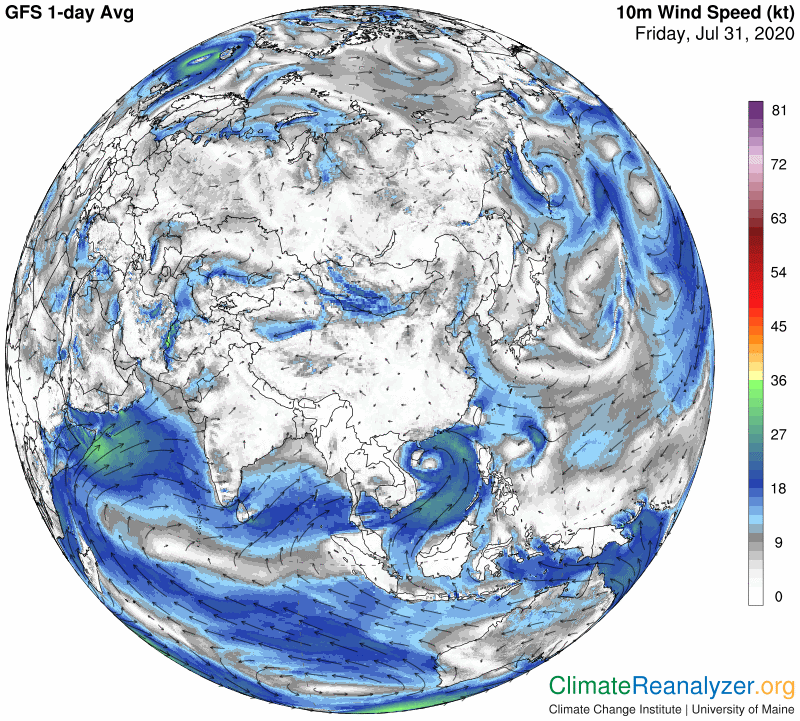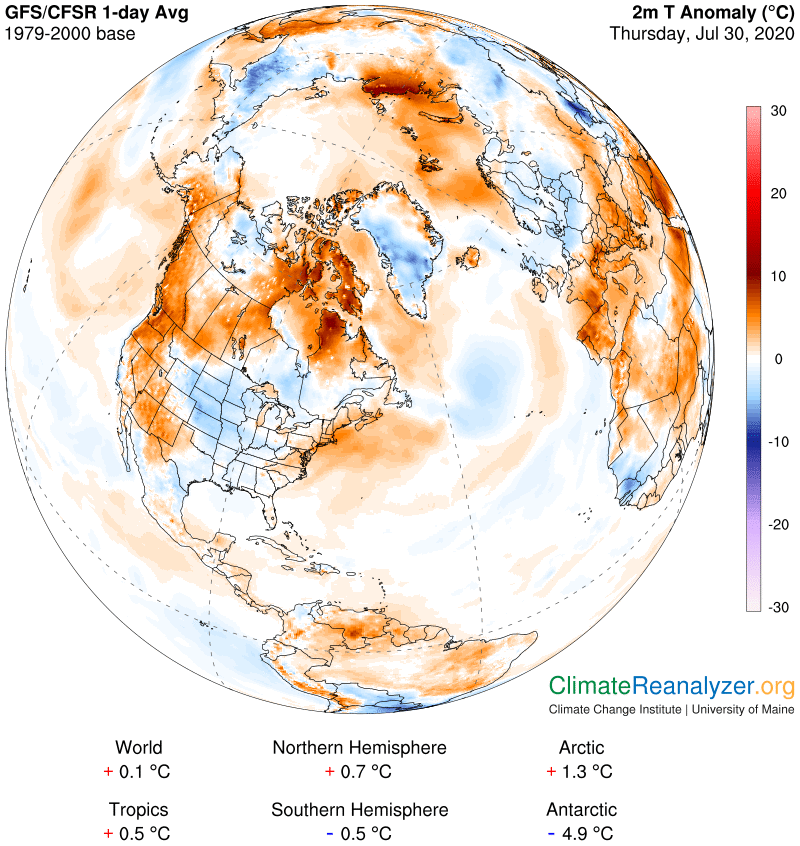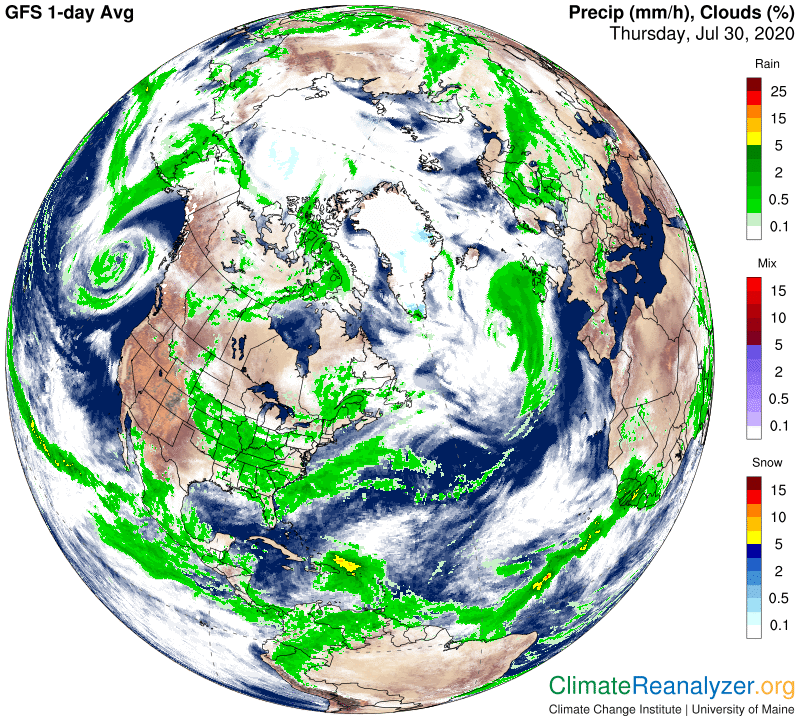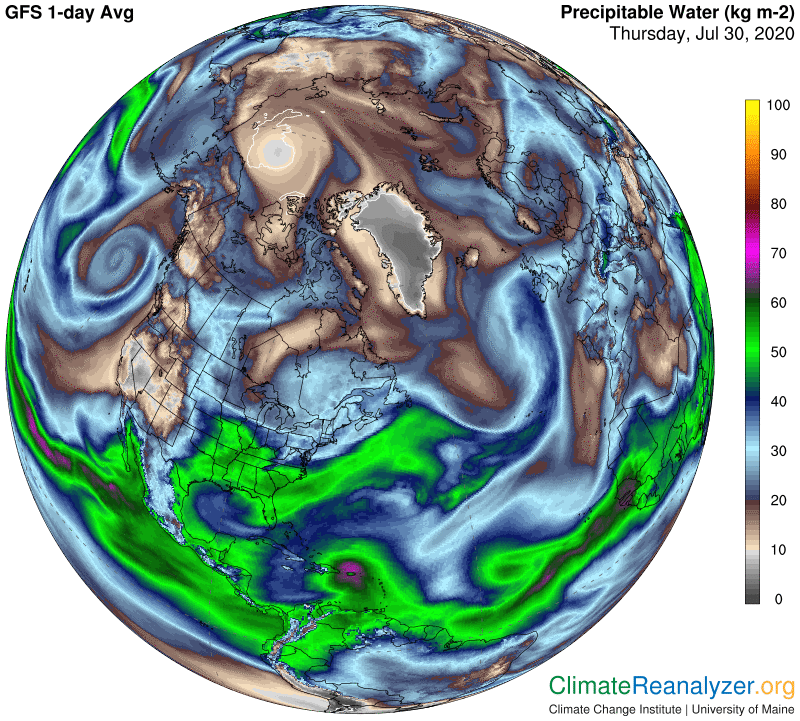In terms of extremes, the most interesting temperature anomalies on the planet these days are always the ones found over Antarctica, where you can see maximums of plus and minus 20C almost all the time, and then watch them switch locations back and forth in a matter of days. This all happens at latitudes higher than 55-60S, and is easily explained by making observations of tiny batches of water vapor flying over some spots and completely missing others on any given day. Apart from the overhead vapor these places have practically zero humidity, because there is no liquid water around to evaporate, and practically no sunlight energy as well. They do have a tiny bit of surface radiation to depend on—I mean really tiny, and a regular amount of carbon dioxide and methane in the air to hold the radiation back with their greenhouse effect, but these things are only worth a few degrees. What is needed is an additional greenhouse boost from an infusion of high-altitude water vapor to get a stronger warming effect, which clearly happens but is not dependable. The best place to go for an illustration of how it comes and goes is the website containing the animated version of precipitable water movement over five-day periods: http://tropic.ssec.wisc.edu/real-time/mtpw2/product.php
Otherwise it is hard to find any anomalies greater than 10C right now, either warm or cold. There is a cold one we can look at, not far from Antarctica, that I think is interesting because it also shows what happens as a result of greatly reduced amounts of overhead water vapor in a location having more normal warmth and surface humidity. You can see it on this map along with a partial view of some of the extreme spots, as just mentioned, that are always over the continent itself:

Now we’ll go straight to the PWat map. This is the same map we reviewed last Friday, which you may want to revisit just to see how rapidly some of the features can change. The key development is that now the two major incoming streams of overhead vapor are both being shunted away from a good-sized chunk of South America, leaving it with low surface humidity and a PWat reading comparable to that of the Antarctic Peninsula region, around 5-6kg. Either of the two overhead vapor streams could easily double that amount if they were not both being held back. On an average day any version of just one such stream moving around the area would probably do so, thus completely avoiding today’s cold anomaly.

We still want to inquire into the reasons why the two vapor streams are avoiding this area. Actually there is a single reason that is fundamental, and the best place to find it is on the 500gPh air pressure map where we see a bulge in the green zone that stretches from one continent to the other. A strong jetstream wind path is sure to be found within the yellow fringe that borders that zone, bearing jets that are capable of holding off further progress of any vapor stream intent on penetrating inner portions of the zone. Some fractions of vapor will indeed succeed a little further on, with a warming effect, which you can observe via the two images above.

I will show you the map of actual jetstream wind images with a warning that it has unusual complexity making it hard to interpret. Once again, an active second pathway is seen deep within the red zone, which is unusual. Also, we completely lose sight of the green-zone jet where its pathway has risen straight north along the coastline but I think it is still effective in blocking vapor movement. The light blue line pathway displays considerable strength along the southeast tip of South America, and inside the blue zone there is activity associated with the borders of the numerous “globules” that have very deep blue shading. It is good to have all this on the record so it can be available for further study and analysis later on.

Carl

























